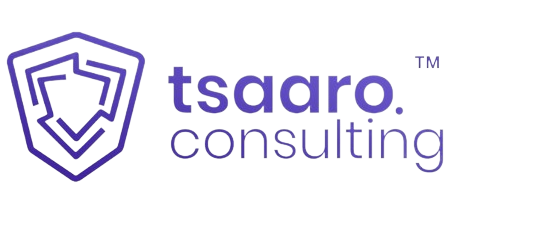Introduction:
With the rapid advancement of technology, AI has become an integral part of various systems, fundamentally transforming industries and everyday life. For example, generative AI such as ChatGPT has revolutionized the way information is processed and generated, showcasing AI’s potential to deliver efficient and innovative outcomes. However, despite its numerous benefits, there are significant instances where generative AI has produced incorrect, discriminatory and biased results, underscoring the urgent need for comprehensive regulation.
The European Union’s AI Act 2024 is a significant legal framework designed to regulate AI and address the risks associated with these emerging technologies. The EU’S AI Act aims to provide AI developers and deployers with clear and precise requirements and obligations regarding the use of AI, ensuring that AI applications are safe, ethical, and trustworthy. At the same time, the regulation seeks to reduce administrative and financial burdens for business, in particular small and medium-sized enterprises (SMEs).
This article explores the EU AI Act 2024, focusing on balancing innovation and regulation. It discusses key provisions, the impact on businesses, particularly SMEs, and compliance strategies. Emphasizing cybersecurity and the need for dialogue between policymakers and industry leaders, it aims to ensure responsible and competitive AI development.
Overview of the EU AI Act 2024:
Section-3(1) of the Act defines ‘AI system’ as a machine designed to operate autonomously and adapt after deployment. It processes input to generate outputs like predictions, content, recommendations, or decisions that affect physical or virtual environments. The Act applies to such providers placing on the market or putting into service AI systems or placing on the market general-purpose AI models in the Union, irrespective of whether those providers are established or located within the Union or in a third country.
The newly adopted AI Act prohibits certain AI practices. Firstly, it bans the use of AI systems employing subliminal or manipulative techniques that distort decision-making and cause harm to individuals or groups. Secondly, it prohibits the exploitation of vulnerabilities based on age, disability, or socio-economic status to manipulate behaviour and cause harm. Lastly, the Act prohibits the use of AI systems for evaluating or classifying individuals based on social behaviour or personality traits, leading to unjustified or disproportionate treatment. These measures aim to safeguard individuals from harmful AI practices and promote responsible AI development.
The AI Act defines ‘risk’ as the combination of the probability of an occurrence of harm and the severity of that harm. It classifies AI systems according to their risk potential, ranging from “minimal” to “limited”, “high”, and “unacceptable”. The purpose of such classification is to balance promoting technological innovation with protecting citizens’ fundamental rights and safety. AI systems that pose unacceptable risks, like those enabling mass surveillance or systematic social behaviour evaluation, are completely banned. High-risk AI systems, such as those used in critical infrastructure or for credit assessments, must meet strict transparency and monitoring standards. These systems are required to undergo risk assessments and document their adherence to high security and data protection standards. For AI systems deemed to have limited or minimal risk, the requirements are less stringent, but there is still a strong emphasis on transparency and information obligations to build trust in these technologies.
The Act further provides classification rules for high-risk AI systems. It lays down three ways in which an AI system can be considered ‘high risk.’ Firstly, when the AI system is itself a certain type of product. Secondly, when the AI system is a safety component of a certain type of product. Lastly, when the AI system meets the description of listed ‘high-risk’ AI systems. This includes AI system listed in areas such as biometrics, critical infrastructure, education and vocational training, employment, access to essential public and private services, law enforcement, immigration and administration of justice and democratic processes.
Article 50 outlines transparency obligations for AI providers and users. The Act mandates that Providers must inform users when they are interacting with an AI system, unless it is obvious. However, this does not apply to AI systems legally used for criminal investigations, provided there are safeguards. It further provides that AI-generated contents such as audio, image, video, or text must be marked as artificial, except for assistive editing functions or legal criminal investigation use. Furthermore, users of biometric and emotion recognition systems must inform individuals and comply with EU data protection laws, with exceptions for legal criminal investigation use.
Implications for Businesses:
The EU’s AI Act is expected to have a significant impact on businesses, particularly small and medium-sized enterprises (SMEs) and startups. These businesses may face challenges due to increased compliance requirements and overregulation. As these businesses often lack the necessary resources to meet these regulatory obligations, the new regulations could disproportionately burden them.
The compliance requirements encompass not only the technical aspects of AI systems but also extensive documentation and reporting duties. Companies must keep detailed records of the development, operation, and evaluation of their AI systems and provide this information to regulatory authorities upon request. While these regulations are designed to enhance transparency and accountability, they impose an additional administrative burden. This is particularly challenging for SMEs, which may lack the capacity to efficiently meet these requirements.
Impact on Innovation:
The Act aims to protect EU citizens from any prejudice and to minimize the risks arising from the use of AI technology. It seeks to create a transparent environment and strengthen users’ trust in these technologies. However, many experts hold a view that the AI regulation poses significant concerns which cannot be overlooked. They hold a view that Act may hinder technological advancement in the EU due to increasing compliance requirements. Small businesses and startups will be negatively affected, impacting the competitiveness of European companies in the global market. These concerns are echoed in statements from the business community, which warn about the potential impacts of the AI Act on competitiveness and technological sovereignty in Europe.
Additionally, there is concern that the EU AI Act could weaken the international competitiveness of European companies. Because the regulations primarily apply within the EU, non-European companies operating under less stringent rules could gain an advantage in the global market. The EU AI Act raises the need for international coordination in AI regulation, as differing approaches between regions like the EU, USA, and China could cause conflicts and market fragmentation. Uniform global standards could minimize these issues, preventing complications in cross-border AI services and promoting innovation. A specific concern is “Regulatory Arbitrage,” where companies might move to countries with lower regulations, weakening the EU’s competitiveness and ethical standards. Balancing innovation with ethical compliance and fundamental rights is crucial for the Act’s success. Collaborative efforts towards shared standards can help mitigate risks and support cohesive global AI advancement.
Balancing Innovation and Regulation:
Despite several constraints posed by EU’s AI Act on innovation, the AI Act creates a legal framework that promotes innovation and supports evidence-based regulatory learning. It also introduces AI regulatory sandboxes—controlled settings for developing, testing, and validating innovative AI systems, including real-world applications. This approach encourages investment and fosters AI innovation across Europe.
While AI regulations may impact some businesses, trustworthy AI is crucial for society. Unregulated, harmful, or deceptive AI could seriously damage user trust and public safety. The regulation will encourage companies to consider risks and address them proactively before deploying AI systems. With clear rules, companies also gain legal certainty and avoid issues that could damage their reputation
The AI regulation cover the most aspects of AI. However, emerging technologies necessitate tailored guidance. Additional legislation may build upon this framework to address these gaps while maintaining the principles of trustworthy AI.
Cybersecurity will be vital in ensuring AI systems remain resilient against misuse. Cyber attacks on AI systems might exploit their vulnerabilities or target AI-specific assets like training datasets or trained models. Therefore, AI system providers must implement appropriate cybersecurity measures, considering both the AI system’s digital assets and the underlying ICT infrastructure to effectively mitigate risks. In this regard, the role of cybersecurity professionals will be crucial in ensuring protection against such cyberattacks. Overall, the Act underscores the EU’s leadership in establishing a model for globally harmonized AI governance. Through collaboration, countries can develop policies that benefit both society and businesses.
Conclusion:
The EU AI Act 2024 represents a significant step towards harmonized AI governance, balancing innovation with regulation to ensure safe, ethical, and trustworthy AI systems. While the Act imposes compliance challenges, particularly for SMEs, it establishes clear standards and promotes transparency. By addressing cybersecurity and the risks associated with AI, the Act aims to protect citizens and enhance public trust. Continued collaboration between policymakers and industry leaders is essential to refine regulations, support emerging technologies, and maintain the competitiveness of European businesses in the global market.













Recent Comments